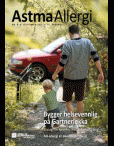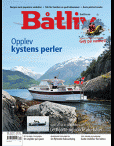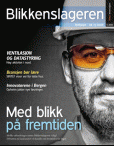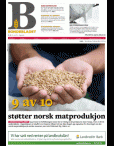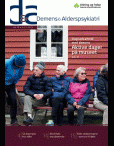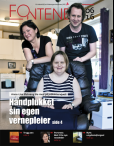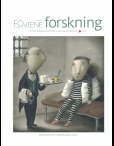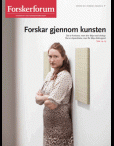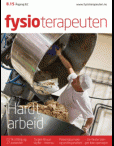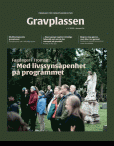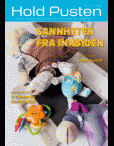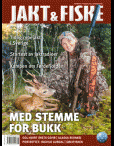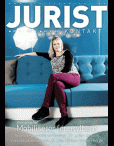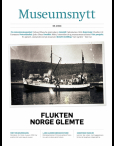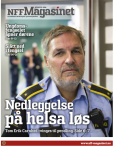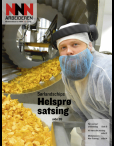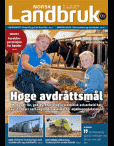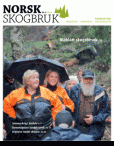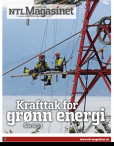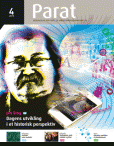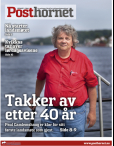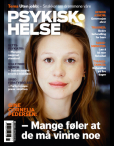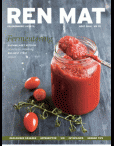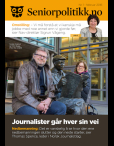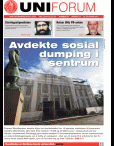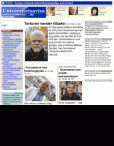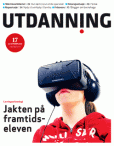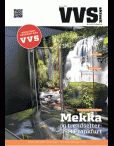Tidsskrift for norsk psykologforening
01.10.2021

- Methods, Evidence, Indications and Limitations While ISTDP is not a panacea, it is a treatment that is clinically useful in diverse psychological and psychiatric samples.
IN THIS ARTICLE I will follow up the article by Camilla Barthel Flaaten published in this journal and speak more broadly about intensive short-term dynamic psychotherapy (ISTDP). I wish to thank Dr Flaaten for writing her article and raising a series of questions and concerns of importance to the practice of psychotherapy and to the practice of ISTDP specifically. I will write here about the general ISTDP working metapsychology of the unconscious and attachment trauma, the stance of the ISTDP therapist, types and timing of interventions, indications and contraindications for ISTDP, the evidence base for ISTDP, training methods, the limits of the model and possible pitfalls/ adverse effects of the method.
METAPSYCHOLOGICAL BASIS OF ISTDP
Based on more than one thousand case studies using videotaped research (Davanloo, 1977; Abbass et al., 2015a), an in-depth understanding of patterns and processes deriving from unresolved attachment trauma has been developed. Interrupted attachments produce a series of feelings including at least grief. In most individuals who have had attachment trauma, the interruption is so painful that it induces rage that is guilt-laden and that becomes buried and avoided. Later relationships activate the attachment feelings including love, grief and any rage and guilt about the rage. When these feelings are mobilized at an unconscious level, they induce unconscious anxiety in specific demonstrable pathways and a series of matching unconscious defense patterns (Davanloo 2000; Abbass, 2015).
Unconscious anxiety has specific observable patterns affecting voluntary muscle tension (tense muscles, sighing, muscle pain and spasms), smooth muscle (bowel, bladder, blood vessels), and cognitive-perceptual function (affecting vision, hearing, concentration, memory and level of consciousness). Some categories of unconscious defense include isolation of affect (intellectual awareness without feeling the emotions), repression of emotions, projection and other primitive defenses and resistances against emotional closeness. These specific patterns are related to emotions of different levels of intensity, typically occurring at different stages of child development. All of this has been studied and repeatedly observed on video-recorded cases throughout treatment courses, leaving us with a pathophysiology of attachment trauma, physiology of emotions and metapsychology of unconscious operations (Davanloo, 1977, 2000; Abbass, 2015).
STANCE OF THE ISTDP THERAPIST
When the therapist and patient form a therapeutic bond, with a shared goal that is agreed upon by both, unconscious, unprocessed complex feelings about attachments in the past are mobilized. These feelings then manifest as unconscious anxiety and subsequent unconscious defenses. Together, the therapist and patient identify unconscious defenses and unconscious anxiety and enable the patient to identify and process the feelings that are being activated by the attachment process with the therapist.
For perhaps a majority of patients, depending on the clinical setting, the process requires a supportive component designed to build self-reflective capacity, anxiety tolerance and ability to recognize emotions. This process includes what is called the graded format, in which complex feelings and subsequent unconscious anxiety are mobilized and reflected upon. This work changes the anxiety pattern from the smooth muscle or cognitive-perceptual field to voluntary muscle (Davanloo, 2000, Abbass, 2015). With these changes, the patient can then tolerate and begin to experience the underlying past feelings underpinning the anxiety.
For such challenging work to be therapeutic, the process needs to be completely voluntary, clear and understood by both parties. Any tendency of the patient to passively comply with the therapist must be recognized and addressed as a treatment-defeating mechanism. The process requires positive regard back-and-forth between both people, even while complex feelings are mobilized within them. In other words, a solid team is required, with aspects of conscious therapeutic alliance and all the other common psychotherapy factors that have been well established through diverse research. From this space, a collaborative examination of feelings, anxiety and defenses may occur safely and comfortably.
THERAPEUTIC INTERVENTIONS: ACTIVITY VERSUS HOSTILITY
The types of intervention that flow from this therapeutic bond include exploratory processes, clarification of avoidant patterns/defenses, challenge to defenses and further elaborations of these interventions. Linking of various phenomena, recapitulation, anxiety regulating methods and methods to facilitate emotional experiencing are also important elements (Davanloo, 2000; Abbass and Town, 2013; Abbass, 2015).
The timing of these interventions is extremely important. If clarification and challenge are done when those defenses are not present, the patient may perceive himself to be under attack. If the defenses are not adequately clarified before challenging them, the patient will feel himself to be under attack. Suffice to say, each intervention should augment the therapeutic bond, including conscious and unconscious aspects of the alliance. To ensure this, each intervention should be met with a combination of verbal and nonverbal responses that demonstrate that the intervention was both understood and helped the patient move in a healthy direction toward greater self-caring, self-understanding and forgiveness of self and others.
The process is tailored to the patient's unconscious anxiety and defense formats. In tertiary clinics where ISTDP is used (Abbass et al., 2015a), the vast majority of patients have low anxi
Gå til medietMETAPSYCHOLOGICAL BASIS OF ISTDP
Based on more than one thousand case studies using videotaped research (Davanloo, 1977; Abbass et al., 2015a), an in-depth understanding of patterns and processes deriving from unresolved attachment trauma has been developed. Interrupted attachments produce a series of feelings including at least grief. In most individuals who have had attachment trauma, the interruption is so painful that it induces rage that is guilt-laden and that becomes buried and avoided. Later relationships activate the attachment feelings including love, grief and any rage and guilt about the rage. When these feelings are mobilized at an unconscious level, they induce unconscious anxiety in specific demonstrable pathways and a series of matching unconscious defense patterns (Davanloo 2000; Abbass, 2015).
Unconscious anxiety has specific observable patterns affecting voluntary muscle tension (tense muscles, sighing, muscle pain and spasms), smooth muscle (bowel, bladder, blood vessels), and cognitive-perceptual function (affecting vision, hearing, concentration, memory and level of consciousness). Some categories of unconscious defense include isolation of affect (intellectual awareness without feeling the emotions), repression of emotions, projection and other primitive defenses and resistances against emotional closeness. These specific patterns are related to emotions of different levels of intensity, typically occurring at different stages of child development. All of this has been studied and repeatedly observed on video-recorded cases throughout treatment courses, leaving us with a pathophysiology of attachment trauma, physiology of emotions and metapsychology of unconscious operations (Davanloo, 1977, 2000; Abbass, 2015).
STANCE OF THE ISTDP THERAPIST
When the therapist and patient form a therapeutic bond, with a shared goal that is agreed upon by both, unconscious, unprocessed complex feelings about attachments in the past are mobilized. These feelings then manifest as unconscious anxiety and subsequent unconscious defenses. Together, the therapist and patient identify unconscious defenses and unconscious anxiety and enable the patient to identify and process the feelings that are being activated by the attachment process with the therapist.
For perhaps a majority of patients, depending on the clinical setting, the process requires a supportive component designed to build self-reflective capacity, anxiety tolerance and ability to recognize emotions. This process includes what is called the graded format, in which complex feelings and subsequent unconscious anxiety are mobilized and reflected upon. This work changes the anxiety pattern from the smooth muscle or cognitive-perceptual field to voluntary muscle (Davanloo, 2000, Abbass, 2015). With these changes, the patient can then tolerate and begin to experience the underlying past feelings underpinning the anxiety.
For such challenging work to be therapeutic, the process needs to be completely voluntary, clear and understood by both parties. Any tendency of the patient to passively comply with the therapist must be recognized and addressed as a treatment-defeating mechanism. The process requires positive regard back-and-forth between both people, even while complex feelings are mobilized within them. In other words, a solid team is required, with aspects of conscious therapeutic alliance and all the other common psychotherapy factors that have been well established through diverse research. From this space, a collaborative examination of feelings, anxiety and defenses may occur safely and comfortably.
THERAPEUTIC INTERVENTIONS: ACTIVITY VERSUS HOSTILITY
The types of intervention that flow from this therapeutic bond include exploratory processes, clarification of avoidant patterns/defenses, challenge to defenses and further elaborations of these interventions. Linking of various phenomena, recapitulation, anxiety regulating methods and methods to facilitate emotional experiencing are also important elements (Davanloo, 2000; Abbass and Town, 2013; Abbass, 2015).
The timing of these interventions is extremely important. If clarification and challenge are done when those defenses are not present, the patient may perceive himself to be under attack. If the defenses are not adequately clarified before challenging them, the patient will feel himself to be under attack. Suffice to say, each intervention should augment the therapeutic bond, including conscious and unconscious aspects of the alliance. To ensure this, each intervention should be met with a combination of verbal and nonverbal responses that demonstrate that the intervention was both understood and helped the patient move in a healthy direction toward greater self-caring, self-understanding and forgiveness of self and others.
The process is tailored to the patient's unconscious anxiety and defense formats. In tertiary clinics where ISTDP is used (Abbass et al., 2015a), the vast majority of patients have low anxi











